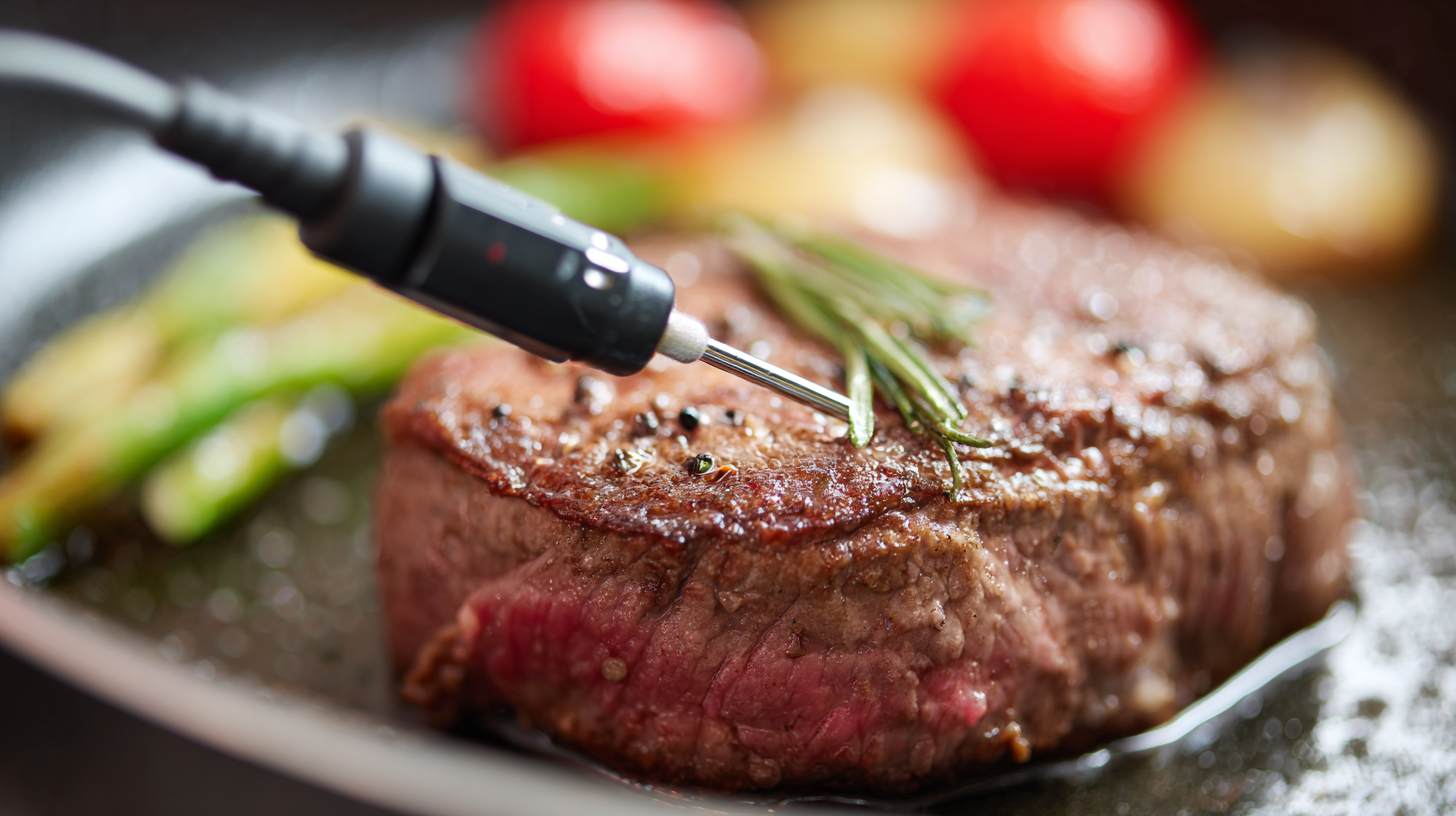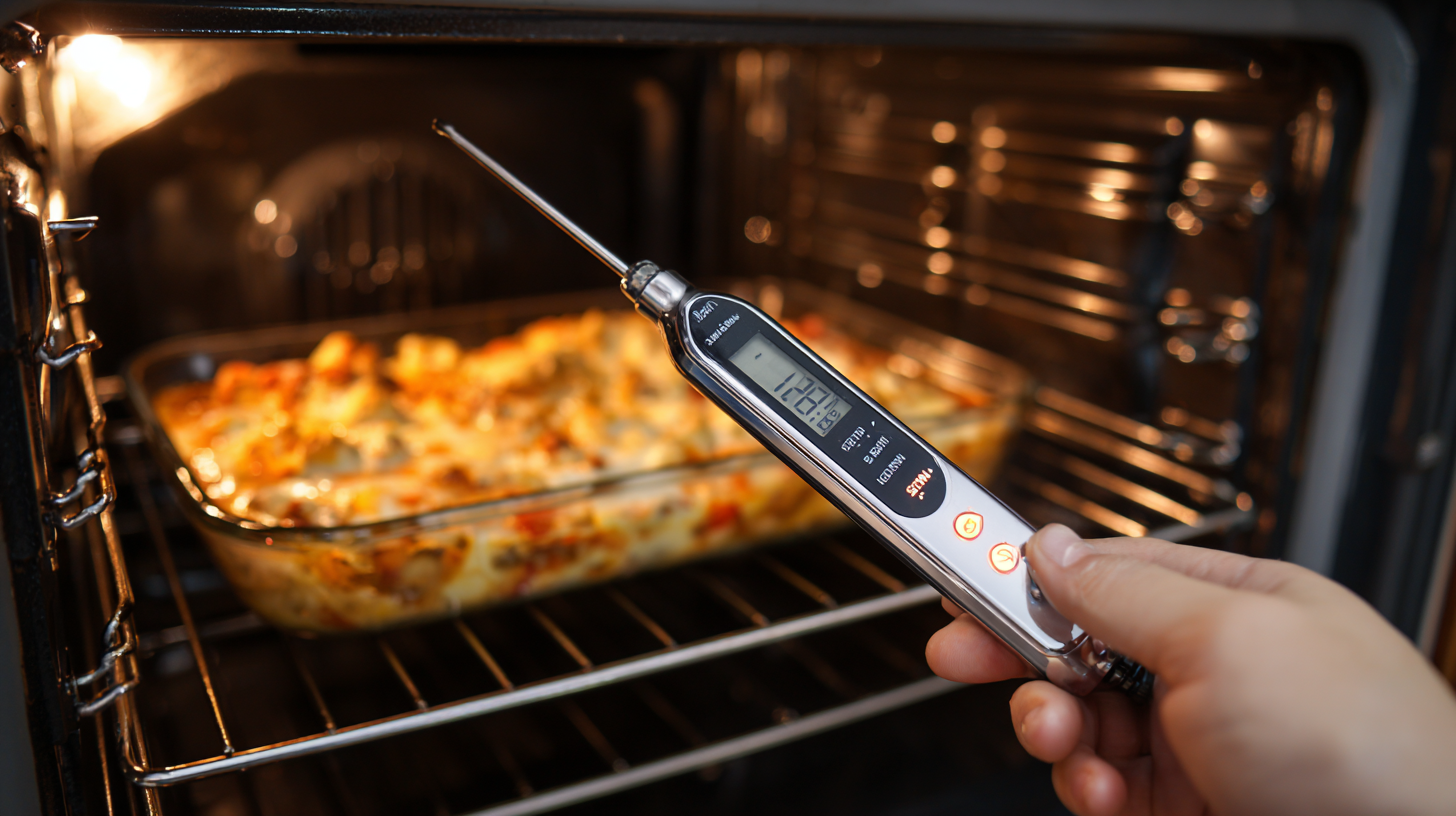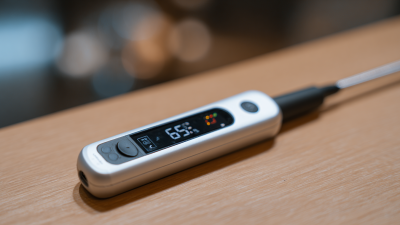Understanding How Temperature Probe Sensors Revolutionize Home Cooking and Food Safety
In recent years, the advent of temperature probe sensors has significantly transformed home cooking and food safety practices. According to a report by the Food Safety and Inspection Service (FSIS), improper cooking temperatures are a leading cause of foodborne illnesses, affecting millions each year. Temperature probe sensors provide a reliable means for home cooks to precisely monitor internal food temperatures, ensuring that meals are cooked to the recommended safety standards. Research from the National Institute of Standards and Technology (NIST) indicates that using these sensors can reduce the incidence of undercooked meat by up to 70%, which not only enhances food safety but also improves culinary outcomes. As more households embrace the use of technology in cooking, understanding how to effectively utilize temperature probe sensors has become essential for anyone committed to gourmet cooking and safe food handling.

The Role of Temperature Probe Sensors in Ensuring Perfectly Cooked Meals
Temperature probe sensors have become indispensable tools in the modern kitchen, playing a crucial role in ensuring that meals are cooked to perfection. These devices measure the internal temperature of food, allowing home cooks to achieve consistent results without the guesswork. By providing accurate readings, they help prevent the common pitfalls of overcooking or undercooking, particularly with meats, poultry, and baked goods. Knowing the precise temperature of food not only enhances taste and texture but also contributes to food safety by ensuring harmful pathogens are eliminated.
In addition to improving meal quality, temperature probe sensors also emphasize the importance of food safety. Undercooked meals can pose serious health risks, leading to foodborne illnesses. With these sensors, cooks can easily monitor temperatures in real-time, providing peace of mind. Many modern probes even come with wireless technology, allowing users to receive notifications on their smartphones, ensuring they never miss the perfect cooking point. This innovation represents a significant leap in how we approach cooking at home, merging convenience with a commitment to quality and safety.

Key Advantages of Digital Temperature Probes for Home Chefs
Digital temperature probe sensors have become indispensable tools for home chefs, revolutionizing the way we approach cooking and ensuring food safety. One of the key advantages of these devices is their precision. Unlike traditional methods that rely on experience or guesswork, digital probes provide accurate readings within seconds, allowing chefs to achieve optimal cooking temperatures for various meats, baked goods, and other dishes. This level of accuracy not only enhances flavor and texture but also plays a crucial role in food safety by eliminating the risks associated with undercooked products.
Another significant benefit of digital temperature probes is their ease of use. Many modern probes feature intuitive interfaces, backend apps, or even Bluetooth connectivity, enabling users to monitor cooking temperatures remotely. This convenience allows chefs to multitask in the kitchen without the constant worry of overcooking or undercooking their meals. Additionally, most digital probes come with preset temperature guidelines for different types of food, making it simpler for novice cooks to follow safe cooking practices. Overall, the integration of digital temperature probes in home kitchens is reshaping culinary experiences while prioritizing health standards.
Understanding How Temperature Probe Sensors Revolutionize Home Cooking and Food Safety - Key Advantages of Digital Temperature Probes for Home Chefs
| Feature | Description | Advantages | Typical Use Cases |
|---|---|---|---|
| Precision Measurement | Digital probes provide accurate temperature readings. | Enhances cooking accuracy to improve dish quality. | Cooking meats, baking, candy making. |
| Instant Readings | Quick temperature updates within seconds. | Saves time in the cooking process. | Grilling, frying, and roasting. |
| User-Friendly Interface | Easy-to-read digital displays. | Enhances user experience for home chefs. | Beginner to advanced cooking. |
| Food Safety Alerts | Built-in alerts for safe cooking temperatures. | Reduces risk of foodborne illnesses. | Cooking poultry, seafood, and reheating leftovers. |
| Portability | Lightweight and easy to carry. | Convenient for outdoor cooking and travel. | Camping, tailgating, picnics. |
Essential Tips for Choosing the Right Temperature Probe for Your Cooking Needs
When selecting the right temperature probe sensor for your cooking needs, consider factors such as accuracy, probe length, and specialty features. Accuracy is paramount; a precise temperature reading ensures that your meat is cooked to the desired level while minimizing the risk of foodborne illnesses. Look for probes that offer a quick response time and a clear display, which can help avoid any guesswork while cooking.
Another essential consideration is the length of the probe. Longer probes can be beneficial for larger cuts of meat, allowing for deeper insertion without burning your hands. Additionally, features such as wireless connectivity can enhance convenience, enabling you to monitor cooking temperatures from a distance. Whether you're a casual home cook or an avid culinary enthusiast, choosing the right temperature probe tailored to your specific cooking tasks can significantly improve your culinary experience and promote food safety.
How Temperature Sensors Enhance Food Safety and Prevent Foodborne Illnesses
Temperature probe sensors are transforming home cooking by ensuring that food is cooked to the ideal temperature, enhancing food safety, and preventing foodborne illnesses. By accurately measuring the internal temperature of meats, poultry, and other cooked items, these sensors help home chefs avoid undercooked dishes that can lead to dangerous bacteria like Salmonella and E. coli. Using a temperature probe not only guarantees that your meals are flavorful and safe to eat, but it also provides peace of mind for those cooking for family and friends.

Tips for Using Temperature Probes: Always calibrate your temperature probe before use to ensure precise readings. Insert the probe into the thickest part of the food, avoiding bone and fat, which can give inaccurate results. Additionally, keep a digital or printed temperature guide handy to know the safe cooking temperatures for various foods.
Implementing temperature sensors in the kitchen is crucial, especially for large gatherings where food safety is paramount. By using these devices, you can guarantee that dishes served are not only delicious but also safe for consumption, significantly reducing the risk of foodborne illnesses. Remember to regularly check the temperature during the cooking process and adjust your heat source as needed to reach the desired outcome.
Integrating Smart Technology with Temperature Probes for Modern Cooking Solutions
In recent years, the integration of smart technology into kitchen appliances has transformed home cooking, particularly with the advent of temperature probe sensors. These advanced devices now offer real-time temperature monitoring and notifications directly to smartphones, allowing home chefs to achieve restaurant-quality results without the constant vigilance traditionally required. According to a report by the International Food Information Council, nearly 60% of consumers are now using smart kitchen gadgets to enhance their cooking and food safety practices. This shift not only improves the culinary experience but also promotes safer food handling, drastically reducing the risk of undercooked meals.
Moreover, temperature probe sensors, equipped with Bluetooth and Wi-Fi capabilities, enable remote monitoring of cooking processes. A study from the Smart Appliance Market Report revealed that the market for smart kitchen devices is projected to grow at a CAGR of 20% over the next five years. This significant growth is attributed to the rising demand for convenience and precision in the kitchen. As users embrace these technologies, they can ensure optimal cooking temperatures, which are essential for food safety and quality. Such advancements not only simplify meal preparation but also encourage more homeowners to experiment with cooking, thus broadening their culinary horizons.
Related Posts
-

5 Essential Tips for Choosing the Right Temperature Sensor for Your Business Needs
-

Top Strategies for Enhancing Efficiency with Temperature Monitoring Sensors
-

10 Best High Temperature Sensors for Accurate Measurements in 2023
-

How to Choose the Best Soil Temperature Sensor for Your Agricultural Needs
-

Ultimate Guide to Mastering Thermal Conductivity Sensors for Enhanced Performance
-

The Ultimate Guide to PV Monitoring: Boosting Solar Efficiency for Global Buyers







